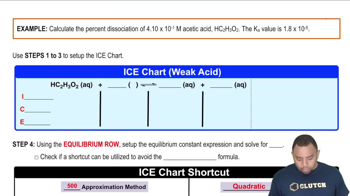Textbook Question
Consider the following oxoacids: HClO, HClO2, HClO3, and HClO4. In which oxoacid does chlorine have an oxidation state of +5? Which oxoacid is the strongest?
(LO 22.17)
(a) HClO has a Cl oxidation state of +5, and HClO4 is the strongest acid.
(b) HClO2 has a Cl oxidation state of +5, and HClO is the strongest acid.
(c) HClO3 has a Cl oxidation state of +5, and HClO4 is the strongest acid.
(d) HClO4 has a Cl oxidation state of +5, and HClO is the strongest acid.




